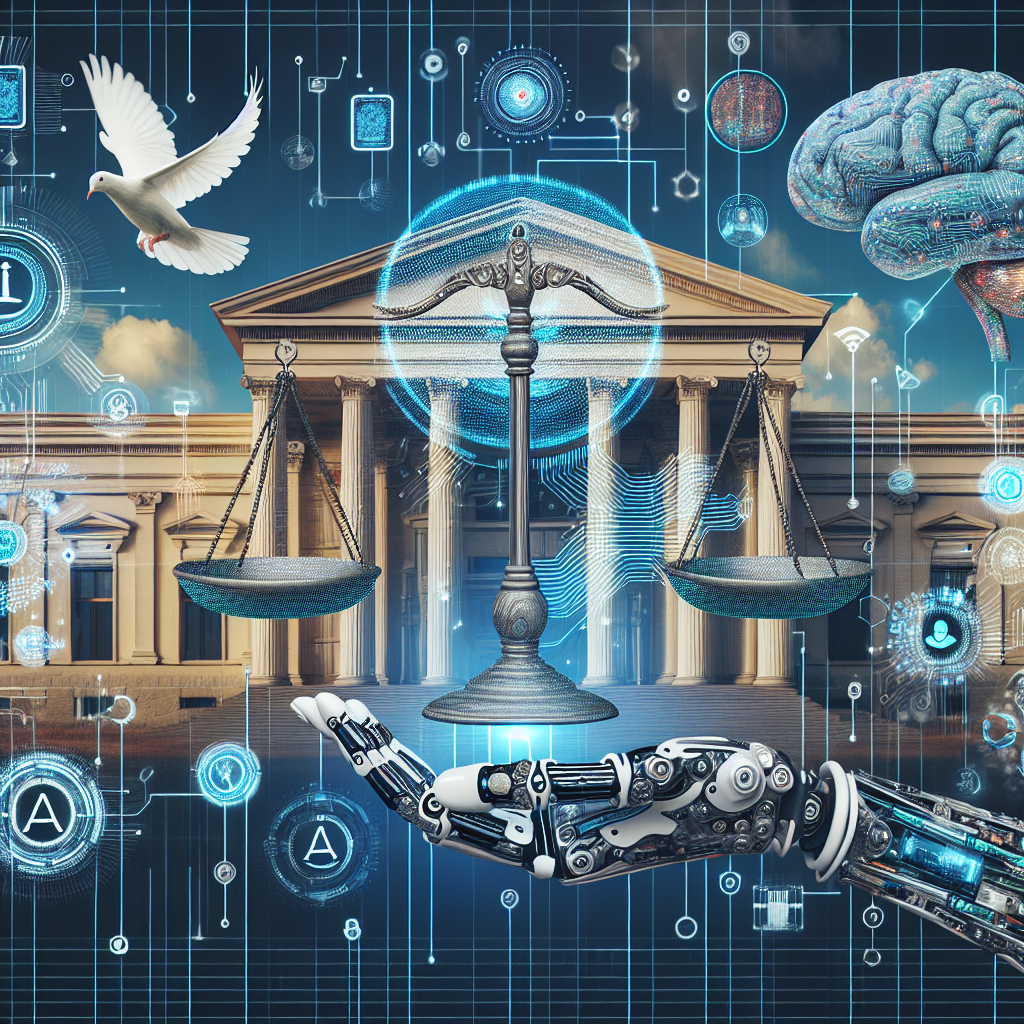In recent years, the field of artificial intelligence (AI) has been increasingly utilized in human rights monitoring and advocacy efforts. AI technology has the potential to revolutionize the way human rights violations are identified, documented, and addressed. From analyzing large datasets to monitoring social media for human rights abuses, AI is playing a crucial role in advancing human rights around the world.
One of the key ways in which AI is being used in human rights monitoring is through the analysis of big data. By analyzing vast amounts of information, AI algorithms can identify patterns and trends that may indicate human rights violations. For example, AI can be used to analyze satellite imagery to detect signs of mass atrocities, track the movements of refugees, or monitor the spread of disinformation online. This kind of data analysis can provide valuable insights for human rights organizations and help them to better understand and respond to violations.
Another important application of AI in human rights monitoring is the use of natural language processing (NLP) technology to analyze text data. NLP algorithms can be used to scan through large amounts of text, such as news articles, social media posts, or government reports, to identify instances of human rights abuses. By using AI to sift through this data, human rights organizations can quickly and efficiently identify violations and prioritize their advocacy efforts.
AI is also being used to improve the accuracy and efficiency of human rights documentation. Traditionally, human rights organizations have relied on manual methods of data collection, such as interviewing witnesses or documenting evidence on the ground. However, these methods can be time-consuming and labor-intensive. AI technology, on the other hand, can automate the process of data collection and analysis, allowing organizations to collect and analyze information more quickly and accurately.
One example of this is the use of AI in the analysis of video footage of human rights violations. AI algorithms can be trained to identify specific actions or objects in videos, such as acts of violence or the presence of weapons. This can help human rights organizations to quickly review large amounts of video footage and identify key pieces of evidence for their advocacy efforts.
AI technology is also being used to enhance the effectiveness of human rights advocacy campaigns. By analyzing social media data, AI algorithms can identify trends and sentiment around human rights issues, helping organizations to better target their advocacy efforts and reach a wider audience. AI can also be used to personalize advocacy messages based on individual preferences and behaviors, increasing the likelihood of engagement and action.
Despite the many benefits of using AI in human rights monitoring and advocacy, there are also concerns about the ethical implications of this technology. For example, there are concerns about bias in AI algorithms, which can lead to discriminatory outcomes in human rights monitoring. There are also concerns about privacy and data security, as the use of AI technology often involves the collection and analysis of sensitive information.
To address these concerns, human rights organizations are working to ensure that AI technology is used in a responsible and ethical manner. This includes developing guidelines and best practices for the use of AI in human rights monitoring, as well as conducting regular audits of AI systems to ensure they are operating fairly and transparently. Human rights organizations are also working to build awareness and capacity around AI ethics among their staff and partners, to ensure that the technology is used in a way that upholds human rights principles.
In conclusion, AI technology has the potential to revolutionize human rights monitoring and advocacy efforts. By analyzing big data, processing text information, and enhancing documentation and advocacy campaigns, AI can help human rights organizations to better understand and respond to violations. However, it is important that this technology is used in a responsible and ethical manner, to ensure that it upholds human rights principles and does not perpetuate bias or discrimination.
FAQs:
1. How can AI technology help human rights organizations in their monitoring and advocacy efforts?
AI technology can help human rights organizations by analyzing big data, processing text information, and enhancing documentation and advocacy campaigns. This technology can provide valuable insights and help organizations to better understand and respond to human rights violations.
2. What are some of the ethical concerns associated with using AI in human rights monitoring?
Some of the ethical concerns associated with using AI in human rights monitoring include bias in AI algorithms, privacy and data security issues, and the potential for discriminatory outcomes. It is important for organizations to address these concerns and ensure that AI technology is used in a responsible and ethical manner.
3. How can human rights organizations ensure that AI technology is used in a responsible and ethical manner?
Human rights organizations can ensure that AI technology is used in a responsible and ethical manner by developing guidelines and best practices for its use, conducting regular audits of AI systems, and building awareness and capacity around AI ethics among staff and partners. It is important for organizations to prioritize human rights principles in the use of AI technology.
4. What are some examples of how AI technology is being used in human rights monitoring and advocacy?
AI technology is being used in human rights monitoring to analyze big data, process text information, enhance documentation efforts, and improve advocacy campaigns. For example, AI algorithms can analyze satellite imagery to detect signs of mass atrocities, scan through social media data to identify human rights abuses, and analyze video footage to identify key evidence for advocacy efforts.

